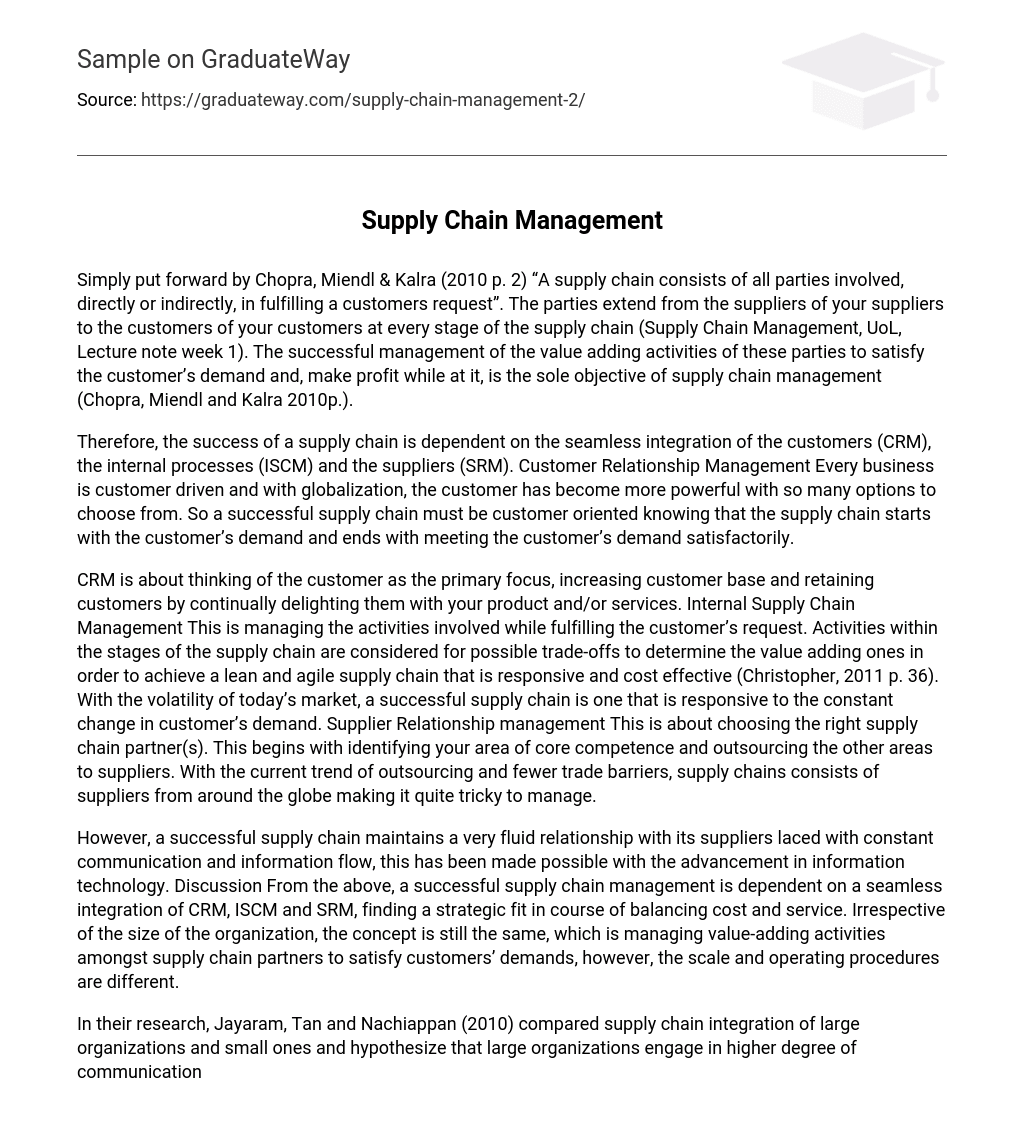Introduction
Simply put forward by Chopra, Miendl & Kalra (2010 p. 2) “A supply chain consists of all parties involved, directly or indirectly, in fulfilling a customers request”. The parties extend from the suppliers of your suppliers to the customers of your customers at every stage of the supply chain (Supply Chain Management, UoL, Lecture note week 1).
The successful management of the value adding activities of these parties to satisfy the customer’s demand and, make profit while at it, is the sole objective of supply chain management (Chopra, Miendl and Kalra 2010p.). Therefore, the success of a supply chain is dependent on the seamless integration of the customers (CRM), the internal processes (ISCM) and the suppliers (SRM). Customer Relationship Management Every business is customer driven and with globalization, the customer has become more powerful with so many options to choose from. So a successful supply chain must be customer oriented knowing that the supply chain starts with the customer’s demand and ends with meeting the customer’s demand satisfactorily.
CRM is about thinking of the customer as the primary focus, increasing customer base and retaining customers by continually delighting them with your product and/or services.
Internal Supply Chain Management
This is managing the activities involved while fulfilling the customer’s request. Activities within the stages of the supply chain are considered for possible trade-offs to determine the value adding ones in order to achieve a lean and agile supply chain that is responsive and cost effective (Christopher, 2011 p. 36). With the volatility of today’s market, a successful supply chain is one that is responsive to the constant change in customer’s demand.
Supplier Relationship management
This is about choosing the right supply chain partner(s). This begins with identifying your area of core competence and outsourcing the other areas to suppliers. With the current trend of outsourcing and fewer trade barriers, supply chains consists of suppliers from around the globe making it quite tricky to manage. However, a successful supply chain maintains a very fluid relationship with its suppliers laced with constant communication and information flow, this has been made possible with the advancement in information technology.
Discussion
From the above, a successful supply chain management is dependent on a seamless integration of CRM, ISCM and SRM, finding a strategic fit in course of balancing cost and service. Irrespective of the size of the organization, the concept is still the same, which is managing value-adding activities amongst supply chain partners to satisfy customers’ demands, however, the scale and operating procedures are different.
In their research, Jayaram, Tan and Nachiappan (2010) compared supply chain integration of large organizations and small ones and hypothesize that large organizations engage in higher degree of communication and information sharing, inter-organizational decision-making and proactive planning than small organizations.
Conclusion
With globalization, companies outsource, merge and engage in offshore sourcing to meet the dynamic demands of customers whose choices are enormous with the Internet and other technological advancement. The large organizations obviously will spend more time and resources to achieve a successful supply chain management.





